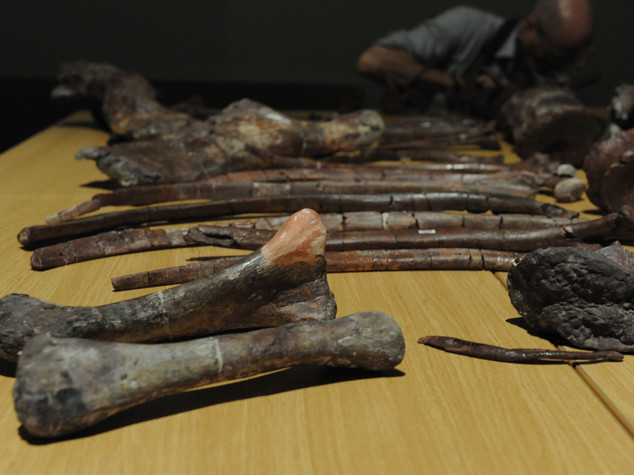South Africa: dinosaur fossil found yields its secrets
(AGI) - Cape Town, 27 Jul - A scan of a dinosaur fossil discovered by a South Af...

(AGI) - Cape Town, 27 Jul - A scan of a dinosaur fossil discovered by a South African palaeontologist in 2005 has revealed more about the specimen that roamed the earth millions of years ago. The fossil, the most complete ever found of a species known as Heterodontosaurus tucki, was scanned at the European Synchrotron Radiation Facility (ESRF) in Grenoble, France between 21 and 26 July. Heterodontosaurus was a small, plant eating animal with grinding teeth in the back of the jaw and big canines in the front, ESRF said in a statement today. The Evolutionary Studies Institute at the University of the Witwatersrand (Wits) in Johannesburg, South Africa, took the complete skeleton of the small dinosaur to the ESRF. The dinosaur is believed to have roamed the earth 200 million years ago. Billy de Klerk found the fossil in a stream bed on a farm near Grahamstown in the Eastern Cape province of South Africa. De Klerk excavated the fossil from the stream bed and removed enough rock from the bones to identify the animal. The skeleton was, however, too small and delicate, and the rocks around it too hard to enable scientists to fully study the anatomy. The fossil was therefore sent to the ESRF, where it was X-rayed. The team of scientists, led by Wits Professor Jonah Choiniere, with ESRF's Dr Vincent Fernandez, scanned the specimen using the extremely brilliant X-rays produced at the ESRF.They wanted to understand how the Heterodontosaurus ate, moved, and breathed. After five days of data taking, Choiniere and the team took a first look at the images. Said Choniere: "Right away when we open these images we can tell quite a few things about the skull. One of the things is that it's likely a juvenile: the skull bones aren't strongly sutured together. We can also tell that we're really able to reconstruct the skull very, very well. On the first scans we can see the openings in the skull which are for the balance organs. We can digitally reconstruct the balance organs of the animal and tell how it held it's head and how it interacted with its environment. That's the sort of data you just can't get by looking at a skull in 2d. So it's very exciting." He said there's still a lot we don't know about early plant-eating dinosaurs. "We need new specimens like this one and new technology like the synchrotron to fill in those gaps," he said. This work is part of a long standing collaboration between palaeoscientists based at the ESRF and in South Africa, an associate country of the ESRF. "The rocks of the Karoo from South Africa have yielded an extraordinary amount of amazing fossils" said Fernandez. "Since South Africa joined the ESRF as an associate country, we've been able to scan a lot of these fossils and work on projects that were not accessible before." (AGI) .

